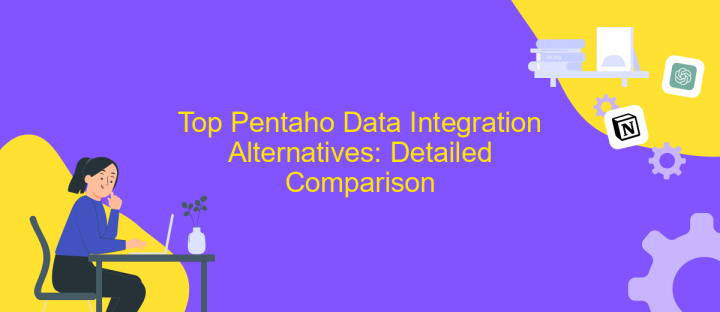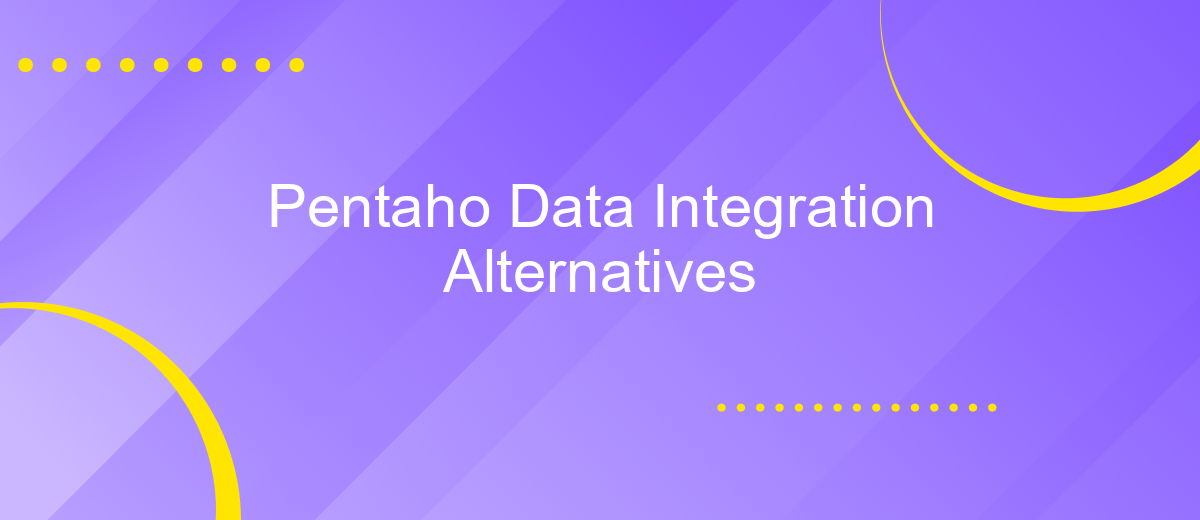Pentaho Data Integration Alternatives
In today's rapidly evolving data landscape, businesses are constantly seeking efficient tools to streamline their data processes. Pentaho Data Integration has long been a popular choice for many organizations. However, as technology advances, numerous alternatives have emerged, offering unique features and capabilities. This article explores some of the most compelling Pentaho Data Integration alternatives, helping you to make an informed decision for your data integration needs.
Introduction: Understanding Pentaho Data Integration (PDI) and its limitations
Pentaho Data Integration (PDI), also known as Kettle, is a powerful open-source tool designed for data integration and transformation. It enables users to extract, transform, and load (ETL) data from various sources into a unified format, making it easier to analyze and report. PDI is widely appreciated for its user-friendly interface, robust capabilities, and flexibility in handling complex data workflows. However, despite its strengths, PDI has certain limitations that may affect its suitability for specific projects.
- Scalability issues when dealing with extremely large datasets.
- Lack of advanced data governance features.
- Limited real-time data processing capabilities.
- Complexity in managing distributed environments.
- Challenges in integrating with some modern cloud services.
Understanding these limitations is crucial for organizations seeking a comprehensive data integration solution. While PDI serves many use cases effectively, exploring alternative tools can provide enhanced performance, scalability, and features tailored to specific needs. By evaluating both the strengths and weaknesses of PDI, businesses can make informed decisions about their data integration strategy, ensuring they select the most appropriate tools to meet their evolving data demands.
Key Considerations When Choosing a PDI Alternative

When selecting an alternative to Pentaho Data Integration (PDI), it's crucial to first assess your specific data needs and project requirements. Consider the scale and complexity of your data workflows, as well as the technical expertise available within your team. Evaluate the integration capabilities of potential alternatives, ensuring they support the data sources and destinations you currently use or plan to use in the future. Additionally, assess the customization and scalability options offered by each tool to accommodate your growing data demands.
Another key consideration is the ease of use and learning curve associated with the alternative. Tools like ApiX-Drive, for instance, offer user-friendly interfaces and straightforward integration processes, making them suitable for teams with varying levels of technical expertise. Investigate the available support and community resources for each option, as robust support can significantly enhance your team's productivity. Finally, consider the cost implications, including licensing, maintenance, and potential training expenses, to ensure the solution aligns with your budgetary constraints while delivering the necessary functionality and performance.
Top Pentaho Data Integration Alternatives: Detailed Comparison

When seeking alternatives to Pentaho Data Integration, it's essential to consider tools that offer robust features, ease of use, and scalability. Many businesses are exploring other options to enhance their data integration processes, optimize performance, and reduce costs. Here, we provide a detailed comparison of some top alternatives to help you make an informed decision.
- Talend: Known for its open-source platform, Talend offers extensive data integration capabilities with a user-friendly interface and real-time data processing.
- Apache Nifi: This tool excels in automating data flow between systems, providing a highly configurable and scalable environment suitable for complex data integration tasks.
- Informatica PowerCenter: A market leader in data integration, Informatica provides comprehensive tools for data management and governance, making it ideal for large enterprises.
- Microsoft SQL Server Integration Services (SSIS): SSIS offers a robust ETL solution for SQL Server users, with seamless integration and advanced data transformation capabilities.
- Alteryx: With its intuitive drag-and-drop interface, Alteryx simplifies data blending and advanced analytics, making it a favorite among data analysts.
Each of these alternatives presents unique strengths and functionalities, catering to various business needs and technical requirements. By evaluating these options, organizations can select a solution that aligns with their data strategy and operational goals.
Use Case Scenarios: Matching the Right Alternative to Your Needs

Choosing the right alternative to Pentaho Data Integration depends on your specific use case scenarios. Each organization has unique requirements, and aligning these with the capabilities of a data integration tool is crucial. Whether you're a small business or a large enterprise, understanding your data needs will guide you to the most suitable solution.
Consider the complexity of your data workflows and the level of technical expertise available within your team. Some tools offer user-friendly interfaces with drag-and-drop features, while others provide more advanced scripting capabilities for complex data transformations. Additionally, evaluate the scalability of the tool to ensure it can grow with your business needs.
- For small businesses with limited technical resources, tools like Talend or Apache Nifi might be ideal due to their ease of use.
- Enterprises requiring robust data processing capabilities might benefit from solutions like Apache Kafka or Microsoft Azure Data Factory.
- If real-time data processing is a priority, consider tools like StreamSets or Google Cloud Dataflow.
Ultimately, the right alternative should align with your organization's data strategy, budget, and technical skills. Conducting a thorough assessment of your needs and testing potential solutions can help ensure a successful data integration strategy.
- Automate the work of an online store or landing
- Empower through integration
- Don't spend money on programmers and integrators
- Save time by automating routine tasks
Conclusion: Making the Best Choice for Your Data Integration Strategy
Choosing the right data integration tool is crucial for optimizing your organization's data strategy. With numerous alternatives to Pentaho Data Integration available, it's important to evaluate each option based on factors such as scalability, ease of use, cost, and compatibility with your existing systems. Tools like Apache NiFi, Talend, and ApiX-Drive offer unique features that can cater to different business needs. For instance, ApiX-Drive provides a user-friendly interface and seamless integration capabilities, making it an excellent choice for businesses looking to streamline their data workflows without extensive technical expertise.
Ultimately, the best choice for your data integration strategy depends on your specific requirements and long-term goals. Consider conducting a thorough analysis of your current data processes and future needs to identify which tool aligns best with your objectives. By making an informed decision, you can enhance data efficiency, improve decision-making, and drive business growth. Remember, the right data integration solution is not just about handling data—it's about transforming it into a strategic asset for your organization.
FAQ
What are some popular alternatives to Pentaho Data Integration?
How do I choose the right data integration tool for my business?
Can I automate data integration processes without coding?
What should I consider when migrating from Pentaho to another data integration tool?
How can I ensure seamless integration between different software applications?
Apix-Drive is a universal tool that will quickly streamline any workflow, freeing you from routine and possible financial losses. Try ApiX-Drive in action and see how useful it is for you personally. In the meantime, when you are setting up connections between systems, think about where you are investing your free time, because now you will have much more of it.


